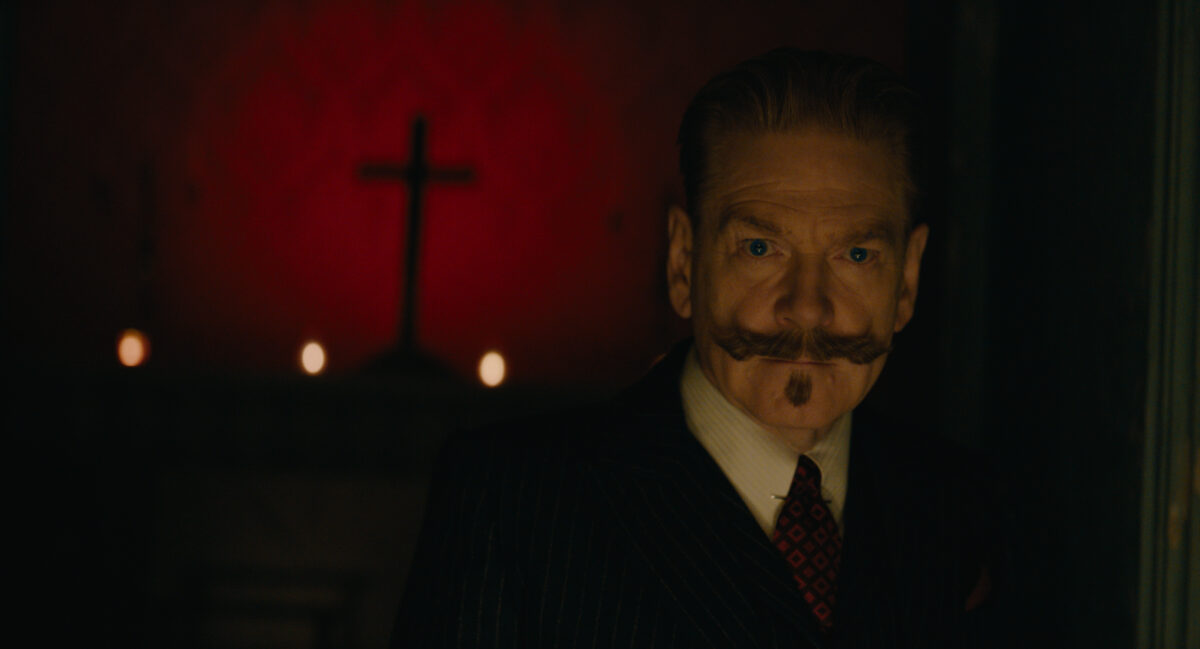
Agatha Christie was the master of the perfectly constructed mystery; Oscar winner Hildur Guðnadóttir (“Joker,” “Tár,”) is an avant-garde cellist-composer. Yet the two meet to spine-tingling results for Kenneth Branagh’s third Hercule Poirot mystery, “A Haunting in Venice,” a loose adaptation of Christie’s “Hallowe’en Party.”
As it turns out, there’s a very good reason why Guðnadóttir might find pleasure in Christie’s work. “My grandmother, who was one of the first women doctors in Iceland and a brilliant virologist, always said that the only way to get a tiny break from your mind is to read a good detective novel or crime story,” Guðnadóttir told IndieWire.
“So, since I was very young, I have lived by this advice,” Guðnadóttir said. “And I have always wanted to sink my teeth into an Agatha Christie adaptation. When Ken approached me about this one, he was really clear from the get-go that he wanted to do something totally different from the other two movies. And he wanted to do something much more dark and moody and more like a chamber piece, and I thought that was really just very exciting.”
On a deeper level, Guðnadóttir was drawn to the psychic pain of Branagh’s retired Belgian detective in this post-World War II whodunit, which co-stars Tina Fey as Christie’s beloved Ariadne Oliver and Michelle Yeoh as a very unconventional medium. It’s about a seance that turns to murder in a haunted palazzo that was once an orphanage where children were tortured. The frightening atmosphere summons ghosts from Poirot’s past, rooted in his obsession with murder, wartime experiences, and hardened view of human nature.
Psychic pain is becoming the throughline of Guðnadóttir’s Emmy-, Grammy-, and Oscar-winning work, which also includes “Sicario: Day of The Soldado,” “Chernobyl,” “Women Talking,” and the upcoming “Joker: Folie à Deux.”

“I’m quite a joyful person and I laugh often and loud, and I love just being happy in general,” she said. “And I think that’s probably the reason why I’m so fascinated by the darker side of the human psyche because I still spend a lot of time creating [somber] music, so I get to kind of experience both sides of the coin.
For “A Haunting in Venice,” Guðnadóttir abandoned her usual practice of creating processed musical sounds on the computer, choosing instead to compose a classical chamber score — performed by the London Contemporary Orchestra at Abbey Road — for greater intimacy. The strings and woodwinds reflected not only Poirot’s unease but also the tension and unanswered supernatural questions associated with the mysterious interior life of the palazzo.
“In this score, I was imagining what it was like to write music before and after the Second World War,” added Guðnadóttir. “In a world that has gone through a complete destruction, how do you move forward, throw out your old beliefs and build something new? The abandonment of romantic ideas and melodies, in exchange for a more abstract sense of musicality.”
This entailed experimenting with tone, both mathematically rigid and structurally open, by changing the melodic structure in more atonal ways. For example, the main theme, “Haunt,” begins the film with a simple solo cello. “It’s a sort of melodic movement that doesn’t really go anywhere,” the composer said. “It’s not happy, it’s not sad, it evokes this feeling in me of introspection. So it almost creates a space in the beginning when [Poirot’s] waking up of: Is it real? Is he dreaming or is he awake?”
Then the music gets unnervingly loud and angry with the “Seance” cue. It’s Guðnadóttir at her experimental best, the way she creates a multiphonic sound on the wind instruments with several notes at once. “So it’s like different ways of blowing into the instruments or tapping on the instruments or just taking something classical and shifting your way of approaching it,” she said. “And I thought that these types of sounds are very much of this time and fall into my line of [avant-garde] interest. How the times are shifting musically and they just lend themselves incredibly well to these supernatural aspects of the film, which you can create with these classical instruments.”
Then Guðnadóttir does a musical deep dive into Poirot’s confused state of mind with “Psychic Pain.” This occurs when he’s assaulted by supernatural forces that undermine his rational thinking and belief system. “It’s just like slow notes and, again, it’s quite sparse and creates a sense of space,” she added. “But it’s more emotional, a bit of heartache as we draw to the end of that piece. It has a slight sense of melody, a slight sense of resolve without [fully resolving].”
Turns out “A Haunting in Venice” was the perfect lead-in for Guðnadóttir’s work on the upcoming sequel “Joker: Folie à Deux.” Only this time, director Todd Phillips has added a musical dimension with the introduction of Lady Gaga as Harley Quinn, the psychiatrist who becomes obsessed with Joker (Oscar winner Joaquin Phoenix) and turns into his sidekick and love interest.
“It’s been really fun to revisit the musicality of Arthur Fleck and Joker because, obviously, in the first film, the music was so present and so upfront,” Guðnadóttir said of her first movie musical. “It was such a big part of him and his story. And I think Phillips has a really strong sense of musicality.”
However, the psychic pain will be multiplied by these two kindred spirits caught in this “Madness for Two.” And it will be creatively exciting for the composer to get inside the delusional minds of Joker and Harley for some delirious musical sequences. But will Guðnadóttir be collaborating with Lady Gaga on some original songs? She’s not telling.
“I’m not allowed to give anything away about which direction it’s going in, but I’ve been doing the process quickly,” she added. “And it’s fantastic to get to do that with beautiful artists like Joaquin and Lady Gaga and Phillips. It’s a real treat for me.”















